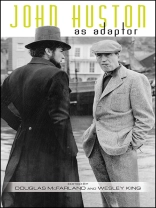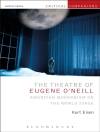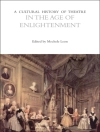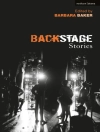Argues that understanding Huston’s film adaptations of literary works is essential to understanding his oeuvre as a filmmaker.
John Huston as Adaptor makes the case that adaptation is the salient element in Huston’s identity as a filmmaker and that his early and deep attraction to the experience of reading informed his approach to film adaptation. Thirty-four of Huston’s thirty-seven films were adaptations of literary texts, and they stand as serious interpretations of literary works that could only be made by an astute reader of literature. Indeed, Huston asserted that a film director should be above all else a reader and that reading itself should be the intellectual and emotional basis for filmmaking.
The seventeen essays in this volume not only address Huston as an adaptor, but also offer an approach to adaptation studies that has been largely overlooked. How an adaptor reads, the works to which he is drawn, and how his literary interpretations can be brought to the screen without relegating film to a subservient role are some of the issues addressed by the contributors. An introductory chapter identifies Huston as the quintessential Hollywood adaptor and argues that his skill at adaptation is the mark of his authorial signature. The chapters that follow focus on fifteen of Huston’s most important films, including The Maltese Falcon (1941), The Treasure of the Sierra Madre (1948), The African Queen (1951), The Night of the Iguana (1964), Under the Volcano (1984), and The Dead (1987), and are divided into three areas: aesthetics and textuality; history and social context; and theory and psychoanalysis. By offering a more comprehensive account of the centrality of adaptation to Huston’s films, John Huston as Adaptor offers a greater understanding of Huston as a filmmaker.
Tabela de Conteúdo
Illustrations
Acknowledgments
Editors’ Introduction: Huston as Reader
Douglas Mc Farland and Wesley King
Introduction: Adapted by John Huston
Thomas Leitch
Part I. Aesthetics and Textuality
1. A Passing Node: The Asphalt Jungle
Murray Pomerance
2. Adapting Addiction: Modernist Aesthetics in Under the Volcano
Douglas Mc Farland
3. Taking Gabriel at His Word: Narration and Huston’s The Dead
Robert L. Colson
4. On Beams and Birds: John Huston’s Adaptation of The Maltese Falcon
Steven Rybin
5. A Screenplay-centric Analysis of Huston’s The Man Who Would Be King
Jonathan C. Glance
Part II. History and Social Context
6. ‘Proceed with the Execution’: Casting, Convention, and the Diminishment of Rose in The African Queen
Wesley King and Douglas Mc Farland
7. John Huston and Postwar Hollywood: The Night of the Iguana in Context
R. Barton Palmer
8. ‘This Has Got to Be a Masterpiece’: John Huston’s Mangled Adaptation of The Red Badge of Courage
Dale M. Pollock
9. Shadowboxing in the Sun: Fighters, Their Bodies, and Their Spaces in Fat City
Tom Dorey
10. Prizzi’s Honor: Greed and Gender in the Beginning of the Neoliberal Era
Betty Kaklamanidou
11. Hints of Modernism, Shades of Noir: Huston’s Maltese Falcon as Transitional Text
Alan Woolfolk
12. Of Borders and Bandits: The Treasure of the Sierra Madre
Camilla Fojas
13. ‘The Thing behind the Mask’: Period, Pacing, and Visual Style in John Huston’s Moby Dick
Nathan Ragain
Part III. Theory and Psychoanalysis
14. Huston’s Freud: Adapting the Life of Psychoanalysis
David Sigler
15. Queer Movements: Color, Performance, and Rhythm in John Huston’s Reflections in a Golden Eye
Kyle Stevens
16. Flannery O’Connor’s Symbolic Motif and the Psychoanalytic Objects of John Huston’s Wise Blood
Wesley King
Contributors
Index
Sobre o autor
Douglas Mc Farland is a retired Professor of English at Flagler College. Wesley King is Assistant Professor of English at Flagler College.












